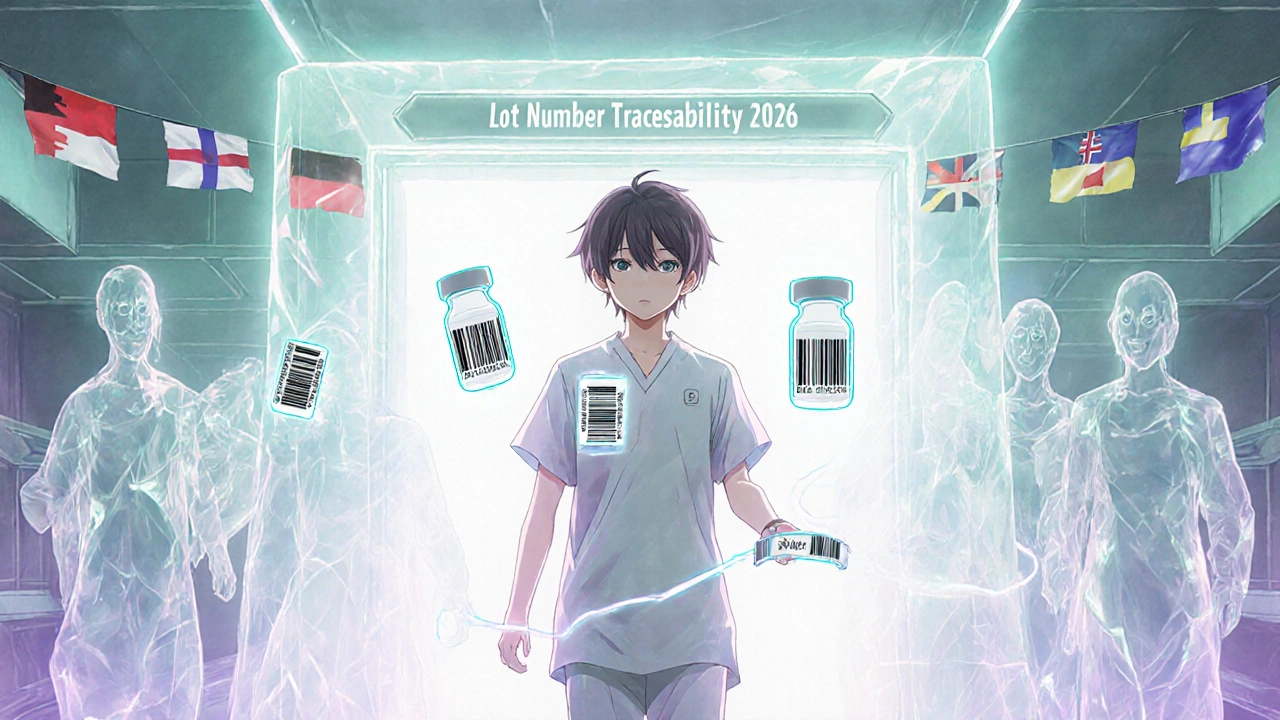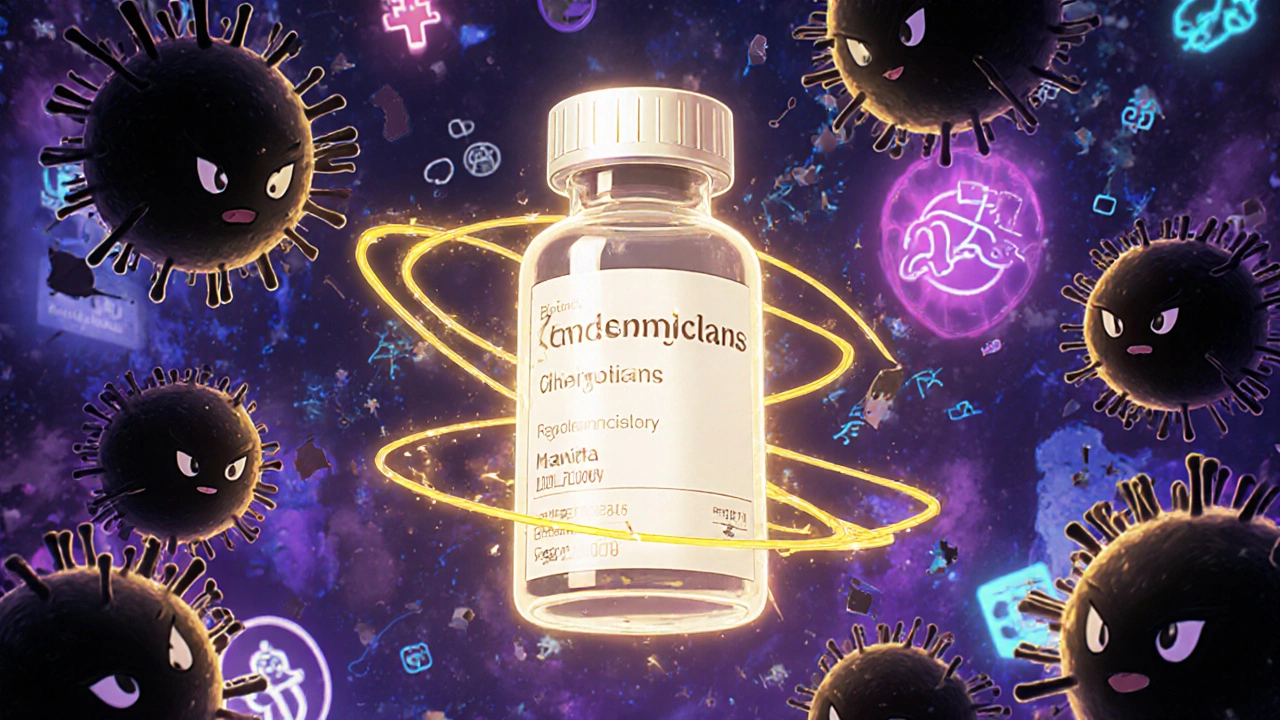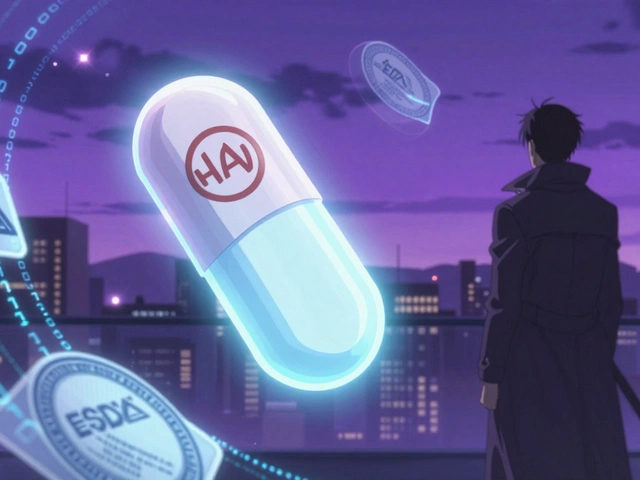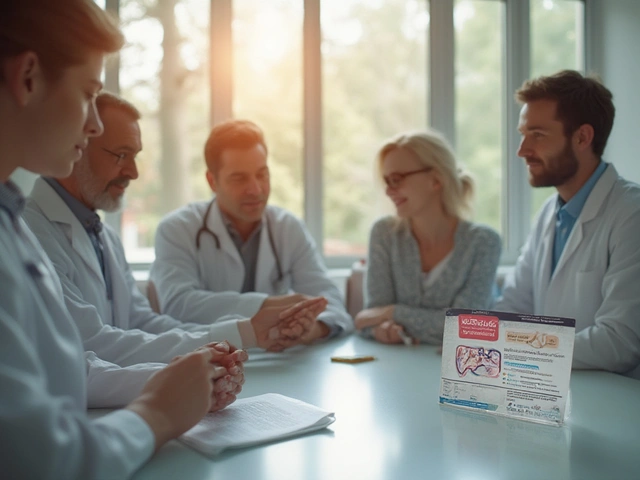When a patient gets a biosimilar instead of the brand-name biologic, they’re not getting a copy like a generic pill. Biosimilars are made from living cells-complex, delicate, and hard to replicate exactly. That’s why their safety doesn’t end when they hit the market. Biosimilars need ongoing, careful monitoring to catch any hidden risks that didn’t show up in clinical trials. This is called adverse event monitoring, and it’s not just paperwork-it’s a critical system keeping patients safe.
Why Biosimilars Need Special Monitoring
Unlike small-molecule generics, which are chemically identical to their brand-name counterparts, biosimilars are highly similar but not identical. Tiny differences in how they’re made-cell lines, fermentation conditions, purification steps-can affect how the body reacts. One of the biggest concerns is immunogenicity: the risk that the immune system might recognize the biosimilar as foreign and attack it. That can lead to reduced effectiveness, allergic reactions, or even dangerous autoimmune responses. These risks aren’t always visible in trials involving a few thousand patients. Real-world use involves millions. That’s why regulators require continuous safety tracking after approval. In the U.S., the FDA approved its first biosimilar, Zarxio, in 2015. Since then, more than 35 have been approved. In Europe, over 43 are on the market. Each one needs its own safety net.How Adverse Events Are Reported
Healthcare providers and patients report problems through spontaneous reporting systems. In the U.S., that’s the FDA’s FAERS. In Europe, it’s EudraVigilance. These systems collect reports from doctors, pharmacists, nurses, and even patients directly. When someone has a bad reaction-say, a severe rash, fever, or drop in blood cell counts-they report it. But here’s the catch: if the report doesn’t say which product was given, it’s useless. A report saying "filgrastim caused neutropenia" could mean the brand-name Neupogen, or one of five different biosimilars. Without knowing which one, regulators can’t tell if a problem is linked to a specific manufacturer. That’s why product identification matters. The U.S. uses a four-letter suffix added to the nonproprietary name-like filgrastim-sndz for Zarxio. Canada and Europe don’t use suffixes. Instead, they rely on brand names. But in practice, many providers still write "filgrastim" on forms, not the brand or suffix. A 2022 survey found that 63% of U.S. physicians were confused about how to document biosimilars correctly. In some cases, pharmacists swap products without telling the prescriber, making it impossible to trace the source of an adverse event.Active Surveillance: Looking Beyond Reports
Spontaneous reports are important, but they’re passive. They depend on people noticing and reporting problems. That means rare or delayed reactions often slip through. That’s why regulators now use active surveillance. The FDA’s Sentinel Initiative scans millions of electronic health records and insurance claims. It looks for patterns: Are patients on a certain biosimilar having more heart attacks than expected? Are more people being hospitalized for infusion reactions after switching to a new product? This system can detect signals within weeks, not years. In Europe, the EMA launched VigiLyze in 2022-a machine learning tool that scans 1.2 million new safety reports every year. It flags unusual clusters, like a sudden spike in lupus-like symptoms among patients using a specific biosimilar. It’s 92.4% accurate at spotting real signals, according to EMA’s 2023 report. These tools don’t replace spontaneous reports-they complement them. Together, they form a two-layer defense: one catching what people notice, the other finding what they miss.
Regulatory Differences Around the World
Not all countries do this the same way. The European Union treats biosimilars the same as reference products under its pharmacovigilance rules. No extra requirements. The FDA, however, requires biosimilar manufacturers to submit safety updates every six months for the first two years after approval, then annually. Canada goes even further: it demands that every biosimilar’s Risk Management Plan include specific methods to distinguish its adverse events from those of the reference product. Traceability rules vary too. Canada now requires the manufacturer’s name to be clearly documented in every adverse event report. Failure to comply can cost up to $500,000. The U.S. has no such penalty, and many hospitals still don’t have electronic systems that capture the exact product name. A 2022 HIMSS survey found only 42.6% of U.S. hospitals could reliably track which biosimilar a patient received. India requires safety reports every six months for two years. The EU requires annual reports and a full benefit-risk review every three years. These differences make global data sharing tricky. But efforts are underway. The ICH E2C(R2) guideline, adopted by 54 countries, now standardizes how safety reports are formatted-making it easier to compare data across borders.Real-World Evidence and the Challenge of Underreporting
Despite all the systems in place, underreporting is a huge problem. A 2021 IQVIA analysis found that biosimilar-specific reports made up just 0.3% of all biologic safety reports-even though biosimilars accounted for 8.7% of biologic prescriptions. That suggests most reactions aren’t being reported. Why? Patients often don’t know what they’re taking. The Arthritis Foundation’s 2022 survey found that 41% of patients on biosimilars couldn’t say whether they received the reference product or a biosimilar. Pharmacists don’t always document substitutions. Doctors don’t always ask. One solution? Mandatory lot number tracking. The International Pharmaceutical Regulators Programme is pushing for a global system by 2026 that assigns a unique identifier to each batch of biologic or biosimilar-like a serial number on a phone. This would let regulators trace exactly which vial a patient received. Pilot studies in Switzerland showed this could cut attribution errors by 73.5%.What’s Next for Biosimilar Safety?
The number of biosimilars is growing fast. The global market will hit $34.9 billion by 2028. More products mean more complexity. Right now, there are 30 reference biologics with multiple biosimilars each. In the future, we could see 300 biosimilars targeting just 30 drugs. Current systems weren’t built for that. Experts agree: the next big leap is AI. Natural language processing tools can now scan doctors’ handwritten notes, discharge summaries, and even patient chat logs to pull out safety signals. One mid-sized company spent $400,000 to implement such a system and cut signal detection time from six months to six weeks. Another focus is immunogenicity. The WHO’s 2022 survey found that 87% of national regulators don’t have standardized ways to measure immune responses to biosimilars. That’s a gap. Future monitoring will need blood tests to track antibody development over time-not just wait for symptoms to appear.
What Healthcare Providers Should Do
If you’re prescribing or dispensing biosimilars, here’s what you need to do right now:- Always document the brand name and manufacturer-not just the generic name.
- Ask patients what product they received at each visit. Write it down.
- Report every serious reaction, even if you’re unsure which product caused it.
- Use electronic prescribing systems that auto-fill the correct product name.
- Train your staff. A 2021 study found only 38% of U.S. pharmacists knew the correct reporting requirements.
What Patients Should Know
You have a right to know what you’re taking. If you’re switched to a biosimilar:- Ask your pharmacist: "What’s the brand name and manufacturer?"
- Write it down in your health journal.
- If you feel worse after a switch-fatigue, rash, joint pain-tell your doctor immediately and say: "I was switched to a biosimilar. Could this be related?"
- Don’t assume it’s "just the same." Biosimilars are close, but not identical.
Patients aren’t just passive recipients of care-they’re part of the safety net. Your awareness can prevent a small issue from becoming a widespread problem.
Final Thoughts
Biosimilars are changing how we treat cancer, arthritis, and autoimmune diseases. They save money. They expand access. But they also demand smarter safety systems. The current tools work-but only if we use them right. The technology exists. The frameworks are in place. What’s missing is consistency, clarity, and commitment from everyone involved: regulators, manufacturers, providers, and patients.Adverse event monitoring isn’t a bureaucratic chore. It’s the last line of defense. And when it comes to life-changing medicines, that line can’t afford to be weak.
Are biosimilars as safe as brand-name biologics?
Yes, based on current data. Studies in Europe, Canada, and the U.S. have found no meaningful differences in safety between biosimilars and their reference products. For example, Denmark’s national monitoring system found no new safety signals in 2015 after thousands of patients switched to biosimilars. But safety is monitored continuously because rare or delayed reactions-especially immunogenicity-can only be detected after widespread use.
Why do biosimilars need different safety monitoring than generics?
Generics are chemically identical to their brand-name versions. Biosimilars are made from living cells and can’t be exact copies. Small differences in manufacturing can affect how the body responds-especially the immune system. That’s why biosimilars require enhanced tracking for immunogenicity, product traceability, and signal differentiation, which aren’t needed for simple chemical generics.
How do regulators tell if an adverse event came from a biosimilar or the reference product?
They rely on product identification. In the U.S., biosimilars have a four-letter suffix (e.g., adalimumab-atto). In Canada and Europe, brand names are used. But if healthcare providers don’t document the exact product name, it’s nearly impossible to know the source. Systems that record lot numbers or manufacturer details are the most reliable. Without them, data gets mixed up, and signals are lost.
What’s being done to improve biosimilar safety tracking?
Several major efforts are underway. The EMA’s VigiLyze uses AI to detect safety signals faster. Canada now requires manufacturer names in all reports. The WHO and IPRP are developing a global unique identifier system for biologics by 2026. Hospitals are upgrading electronic records to capture exact product names. And AI tools are now scanning clinical notes to find hidden safety clues that traditional reports miss.
Can patients report adverse events themselves?
Yes. In the U.S., patients can report directly to the FDA through MedWatch. In Europe, national agencies accept patient reports. Many countries also allow reporting through healthcare providers or directly to the manufacturer. Even if you’re unsure which product caused the reaction, report it. Your report could help identify a pattern that saves others.
Is underreporting a serious problem with biosimilars?
Yes. Despite biosimilars making up nearly 9% of biologic prescriptions in the U.S., they account for less than 0.3% of safety reports. This gap means real problems could be going unnoticed. The main reasons? Patients don’t know what they’re taking, providers don’t document it, and systems don’t track it. Without accurate data, regulators can’t act.
What’s the biggest risk in current biosimilar safety systems?
The biggest risk is confusion over product identity. When multiple biosimilars target the same reference product and no clear tracking exists, it’s impossible to know which one caused an adverse event. This dilutes the signal, delays detection, and undermines confidence. Without better traceability-like lot numbers or mandatory brand documentation-the system can’t keep up with growing numbers of biosimilars.






Leisha Haynes
23 November, 2025 . 11:01 AM
So let me get this straight we’re trusting life-saving meds made in vats of living cells but we can’t even get doctors to write down the brand name right?
Wow. Just wow. I’m not even mad, I’m impressed.
At this point I’d trust my pet goldfish to manage my biosimilar tracking.
At least it wouldn’t forget to label the fishbowl.
Shivam Goel
25 November, 2025 . 02:15 AM
Underreporting? Of course! 0.3% of reports for 8.7% of prescriptions? That’s not underreporting-that’s systemic negligence, compounded by institutional incompetence, exacerbated by regulatory apathy, and further sabotaged by the absence of standardized traceability protocols, which, frankly, should have been mandated five years ago, if not earlier, given the known immunogenicity risks associated with non-identical biologics, especially in heterogeneous populations with variable metabolic profiles and genetic polymorphisms-yet here we are, still relying on handwritten notes and wishful thinking, which is, objectively, a public health catastrophe waiting to happen.
Amy Hutchinson
26 November, 2025 . 13:39 PM
OMG I just got switched to a biosimilar last week and I have no clue what it’s called 😭
My pharmacist just handed me a new box and said ‘it’s cheaper’
Now I’m paranoid every time I feel a little tired
Can someone tell me how to even find out what I’m taking??
Archana Jha
28 November, 2025 . 02:39 AM
they dont want you to know the truth
the biosimilars arent even real drugs
theyre lab-grown mind control agents designed by big pharma to track your immune response and feed data to the government
the four letter suffix? its a microchip
the lot numbers? theyre nano-antennas
you think canada and europe are better? nope-theyre just in on it too
the who? theyre all part of the global bioweapon rollout
theyll say its safe until you start having dreams about vials
then its too late
youve already been tagged
Aki Jones
29 November, 2025 . 18:15 PM
Let’s be clear: this entire system is a fragile, over-engineered house of cards held together by duct tape and hope.
AI? VigiLyze? Sentinels? These aren’t safety nets-they’re PR stunts.
Every single report is contaminated by human error, institutional laziness, and the fact that no one-NO ONE-actually knows what they’re prescribing.
And you wonder why immunogenicity signals are buried?
Because the data is garbage-in, garbage-out.
And the regulators? They’re not looking for safety.
They’re looking for plausible deniability.
And if you’re a patient? You’re just a data point in a spreadsheet that no one reads until someone dies.
And then they’ll say ‘we didn’t know.’
Well-now you know.
Jefriady Dahri
30 November, 2025 . 03:06 AM
Hey everyone, I just want to say-your voices matter 💪
Even if you’re scared or confused, speaking up about what you’re taking? That’s bravery.
I’m a pharmacist in India and I’ve started writing the brand name on every script-even if it’s a pain.
One patient told me she finally felt safe because someone cared enough to write it down.
That’s the change we need-small, human, consistent.
You’re not just patients-you’re the heartbeat of this system.
Keep asking. Keep tracking. Keep reporting.
We’ve got your back ❤️
Andrew McAfee
30 November, 2025 . 13:06 PM
Back home in the States we got this whole biosimilar thing backwards
They want us to trust science but won’t let us know what we’re injecting
It’s like giving someone a car with no dashboard
Engine’s running but you don’t know if it’s gas or diesel
And then you wonder why people panic when the check engine light flickers
Simple fix-write the name down
It ain’t rocket science
Andrew Camacho
2 December, 2025 . 08:16 AM
THIS IS A SCAM.
Do you know what happens when you mix 30 biosimilars into one hospital formulary?
It’s not medicine-it’s a biological Russian roulette.
One patient gets a rash, another gets a seizure, a third gets chronic fatigue-no one knows which vial did it.
And the FDA? They’re too busy patting themselves on the back for approving 35 of them.
Meanwhile, real people are dying because someone didn’t write down ‘Adalimumab-atto’
It’s not negligence.
It’s corporate malice dressed up as innovation.
And you? You’re the sacrifice.
Wake up.
They don’t care if you live.
They care if the stock price goes up.
Arup Kuri
2 December, 2025 . 14:37 PM
India has the right idea-report every six months
But you think they actually do it?
Ha.
Doctors here write ‘insulin’ on a napkin and hand it to the pharmacist
Pharmacist swaps it for the cheapest one
Patient gets sick
Family blames the doctor
Everyone moves on
No one gets fined
No one gets punished
Because in this country, paperwork is optional
And lives? They’re cheap
So why bother tracking?
Just pray you don’t get the bad batch
Elise Lakey
3 December, 2025 . 01:15 AM
I’ve been on a biosimilar for two years now and I’ve never been asked what brand I got.
It makes me feel like a number.
I want to know what I’m taking.
I want to be able to report something if I feel off.
But I don’t even know how to start.
Is there a simple guide somewhere?
Like… for regular people who aren’t doctors or regulators?
Erika Hunt
3 December, 2025 . 07:26 AM
It’s fascinating-really-how we’ve built this entire infrastructure around biological complexity, yet still rely on the most fragile human systems to manage it: handwritten notes, verbal handoffs, untrained pharmacists, confused patients, and outdated EHRs that can’t even auto-populate a four-letter suffix.
And yet, we’re surprised when signals get lost?
It’s like building a Ferrari with a bicycle chain and expecting it to win the Monaco Grand Prix.
AI and machine learning are brilliant tools, but they’re only as good as the data they ingest-and right now, the data is a mess.
We need mandatory electronic prescribing with lot-level tracking, patient education campaigns, and a national standard for documentation-no exceptions.
Otherwise, we’re not monitoring safety-we’re just pretending to.
Sharley Agarwal
4 December, 2025 . 05:00 AM
They’re lying.
It’s not safe.
They don’t care.
Just wait.
You’ll see.
prasad gaude
5 December, 2025 . 13:09 PM
You know, in India we say: ‘The river doesn’t care if you’re holding a plastic bottle or a gold cup-it still carries you downstream.’
Biosimilars are like that.
They look the same.
They cost less.
But the current? The hidden currents? They’re different.
And if you don’t know which bottle you’re holding…
You might not notice until you’re already drowning.
So write the name.
Ask the question.
Be the one who notices the current.
Timothy Sadleir
5 December, 2025 . 20:59 PM
It is imperative to underscore that the current pharmacovigilance architecture for biosimilars, while ostensibly robust, remains fundamentally inadequate due to the absence of mandatory, granular, and universally enforced product identification protocols.
Furthermore, the reliance upon spontaneous reporting systems-predicated upon the cognitive and behavioral compliance of overburdened clinicians-is not merely suboptimal; it is epistemologically unsound.
Until every vial is assigned a cryptographically verifiable, blockchain-anchored, ISO-compliant unique identifier-linked to patient EMRs, pharmacy logs, and manufacturer batch records-the entire system remains vulnerable to systemic failure.
Any assertion to the contrary constitutes dangerous complacency.
Srikanth BH
6 December, 2025 . 21:34 PM
Hey, I’ve been prescribing biosimilars for 8 years now.
Started out skeptical.
Now I’m a believer.
But I always write the brand name. Always.
Even if it takes 10 extra seconds.
And I ask my patients: ‘What’s the name on the box?’
Most don’t know.
So I teach them.
One person at a time.
It’s not glamorous.
But it saves lives.
You don’t need AI to fix this.
You just need to care enough to write it down.
Jennifer Griffith
7 December, 2025 . 01:10 AM
so like… biosimilars are just generics but with more steps?
why is everyone making it sound so complicated
i mean if it works and its cheaper… who cares if the name has 4 letters
people are acting like it’s a secret government experiment
its just medicine
stop overthinking it
Roscoe Howard
7 December, 2025 . 03:30 AM
Let me be blunt: this is what happens when you outsource healthcare innovation to nations with lower regulatory standards.
The U.S. is being outmaneuvered by global competitors who don’t value patient safety as we do.
Europe? They’re too lax.
India? They’re chaotic.
And now we’re stuck with a patchwork system that can’t even track which vial a patient received.
This isn’t progress.
This is surrender.
And if we don’t demand American-made traceability, American-made oversight, and American-made accountability-then we’ve already lost.
Our patients deserve better.
They deserve American standards.
Kimberley Chronicle
7 December, 2025 . 23:36 PM
Just read the EMA’s 2023 VigiLyze report-92.4% accuracy in signal detection is incredible.
But here’s the kicker: it only works if the input data is clean.
Which means we need to fix the front end-prescriber documentation, pharmacy labeling, patient education.
AI can’t fix bad data.
People can.
So let’s start with one simple habit: always document the brand name and lot number.
It’s not bureaucracy.
It’s bioethics.
Leisha Haynes
9 December, 2025 . 18:03 PM
lol i just checked my last prescription
it says ‘filgrastim’
no brand
no suffix
just ‘filgrastim’
so i guess i’m playing biosimilar roulette
my immune system’s the lucky winner